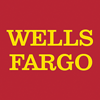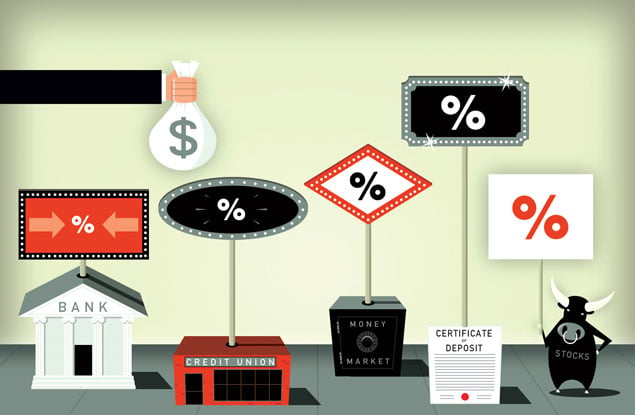Finding a savings account that’s safe but offers a decent
return has become a frustrating task. Interest rates have been stuck at
historic lows since the financial crisis hit, and they show little sign of
going up soon. That’s good news for people borrowing money for a mortgage
or auto loan but bad news for savers looking for higher interest rates for
their cash.
A typical low-fee, no-hassle, low-minimum savings account
currently offers about a 0.75-percent yield, says Ryan Fleming, a
financial planner at Armstrong Fleming & Moore in DC: “It’s shameful,
but that’s a really attractive short-term rate now.” That return means
that a $10,000 account would generate about $75 a year—barely enough to
pay for two lattes a month at Starbucks.
For larger amounts of savings, incremental increases in
interest rates can have a bigger impact. Certified financial planner
Barbara Warner of Warner Financial in Bethesda urges clients to consider
online banks, which tend to pay slightly higher rates, for a savings
account that’s sizable—say, $100,000. Ally Bank now offers a 0.84-percent
return on its online savings account. The ING Direct Orange Savings
Account currently offers a 0.8-percent interest rate with no fees and no
minimum balance. (Capital One recently acquired ING Direct, which gives
ING customers free access to the more than 830 Capital One ATMs in the
area.)
CDs, or certificates of deposit, also offer higher rates of
return, but customers usually are required to lock in money for a year or
longer, or pay a fee to withdraw it, which means they’re stuck with a low
interest rate if rates start to rise. “We don’t want to tie up somebody’s
money for three years for 1.25 percent,” says Warner. “A year from now,
that might not look good.”
Money-market funds are also relatively safe—and in the past
have offered higher interest rates than savings accounts—but they tend to
have more restrictions on withdrawals and access. Yields on money-market
funds have dropped, and many of them pay less than savings accounts today.
The Vanguard Prime Money Market Fund currently offers a yield of just 0.04
percent. And money-market funds aren’t FDIC-insured, as bank accounts
are.
| Five Better Ways to Save | ||||
| Banks are launching new types of accounts to encourage customers to save despite low interest rates. Here’s a roundup of some popular options. | ||||
|
|
 |
 |
||
| Opt-Up CD | High Yield Free Checking | Orange Savings Account | Live Solid Savings | Way2Save |
| 0.65% | 1.00% | 0.80% | 1.00% | $1.00 |
| Minimum balance of $10,000 with an 18-month term. Currently pays 0.65 percent, but if rates rise during the term, you can lock in a higher rate. | Offers an interest rate five times higher than the national average for one year on balances of up to $100,000. To retain that rate, you must keep an average monthly combined balance of $5,000 across all accounts. | Pays 0.8-percent interest; no fees and no minimums. | Pays a 1-percent bonus, up to $25, on the one-year anniversary of an account. No fee with a $1,000 minimum or $25 or more in automated monthly transfers from a SunTrust checking account. | Offers automatic transfers of $1 a day, $1 with each debit-card purchase, or a monthly transfer of $25 into a savings account. |
| NOTE: Banks frequently change the interest rates offered on accounts; check online to get the current rate. | ||||
Is Your Bank Safe?
Anyone willing to take on more risk, particularly for
longer-term savings, can shift some money into more aggressive places,
such as the stock market.
“There are alternatives to just savings accounts and
money-market accounts,” says Scott Wilfong, president and CEO of the
Greater Washington/Maryland division of SunTrust Bank. “There are good
long-term bonds out there and strong dividend-paying stocks. The dividend
yield can be double the savings rate, but you have to be willing to take
on risk.” While all stocks are risky, dividend-paying stocks tend to be
larger companies with excess cash.
For short-term savings, advisers generally recommend parking
money in an easy-access savings account that imposes no fees as long as
the account stays above a minimum balance—even if that means sacrificing
some returns. Websites such as Google Advisor and Bankrate.com make it
easy to compare rates across local and national banks.
When doing so, Warner recommends first checking safety. If a
bank unexpectedly closes its doors, account holders can face delays in
gaining access to their money even if the account is FDIC-insured, meaning
deposits are guaranteed up to $250,000 per person per bank. Account
holders can confirm that their bank is FDIC-insured by looking up the
institution on the Bank Find tool of FDIC’s website; credit unions offer similar
protection through the National Credit Union Administration. The website
Bauer Financial offers an easy search for banks’ “star ratings,” which
indicate the soundness of a financial institution. Germantown-based OBA
Bank has five stars, for example, while Colombo Bank in Rockville has
zero.
Warner says banks change their interest rates constantly, so an
appealing 1-percent teaser rate could drop to half that without notice.
Some banks also have been instituting fees that can quickly add up,
especially on smaller accounts.
“It’s getting harder and harder to find free accounts,” says
Warner, and customers often need to read the fine print and examine all
letters they receive from their bank to avoid being surprised with new
fees.
The easiest way to avoid fees is to maintain the required
minimum balance, which varies by bank. Some waive fees for other reasons
as well: SunTrust waives them on its checking accounts if you
direct-deposit your income into the account; Wells Fargo forgoes the fee
on its saving accounts if you establish an automatic transfer into the
account.
Trading Interest for Service
Low returns have led some banking experts to urge clients to
consider potentially more important factors than interest rates when
choosing a bank, such as convenience and lifestyle. Credit unions, for
example, typically offer higher returns on savings accounts but might have
fewer ATMs, so a frequent business traveler could find it harder to
withdraw cash on the go.
“Typically, credit unions pay a bit better than banks, and many
people like them for other services, too—they have cheaper car loans and
good mortgage financing for members,” says Warner. To be eligible for
membership, people typically need to work for a government or institution
affiliated with a credit union or be related to someone who
does.
Many banks offer free, sophisticated online tools to help
customers manage their money, which can be worth more than earning an
extra $25 a year. ING Direct recently launched My Saving Goals, which
helps you figure out your budgets and timelines for meeting big savings
goals and lets you set up automatic contributions into the account. When
you reach a milestone, such as the halfway point, ING sends a
congratulatory e-mail. Wells Fargo offers an online spending-report tool
that tracks debit- and credit-card purchases and analyzes changes from
month to month.
Local banks can provide a more personal touch for clients who
enjoy in-person meetings and customized advice.
“Our tellers know our customers,” says Jennifer Montague,
regional manager and senior vice president at Sandy Spring Bank, which is
based in Olney. “With online banks, no one’s asking you questions to
understand what you’re trying to do financially.”
Dan Waetjen, regional president at BB&T, urges customers as
well as his own adult children to build relationships with bankers. “They
help you understand what type of account is best,” he says, and alert
customers when interest rates start to climb so they can adjust their
accounts accordingly.
“If you’re someone who likes to walk in and talk to someone
about your money,” says Fleming, “you should never consider an online
bank—you will be so frustrated.” He recommends local institutions, such as
OBA Bank, for that type of customer. “If you’re a decent-size customer—and
for a local bank, that’s anyone with $25,000 to $100,000 or more in
deposits—they love you. If you’re a good, memorable customer, those local
banks will greet you by name when you walk in the door and know details
about you, and they have a more stable staff than the giant banks, where
people are constantly looking to move up.”
Most advisers and banking experts agree that regardless of the
prevailing interest rates, the most important factor in building savings
is to set money aside regularly. “It’s not a very exciting time in terms
of rates, but it’s important to get into the habit of saving to build up
balances over time,” says Erin Constantine, senior vice president with the
deposit-products group at Wells Fargo. She recommends setting up an
automatic transfer into a savings account on payday. Then when rates do go
up, you’ll be ready to take advantage of them.
“These days aren’t going to last,” says Warner, adding that
eventually savers may see rates approaching 2 or 3 percent again. On a
$10,000 account, that would mean pocketing an extra $250 a
year.
Kimberly Palmer (kim@generationearn.com) is author of the
book “Generation Earn: The Young Professional’s Guide to Spending,
Investing, and Giving Back.”
This article appears in the September 2012 issue of The Washingtonian.





















